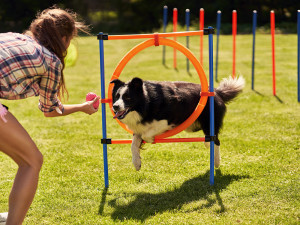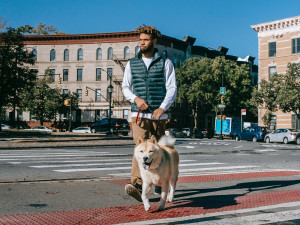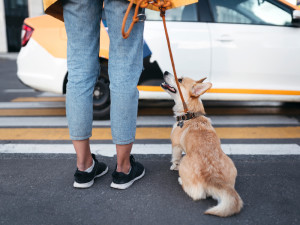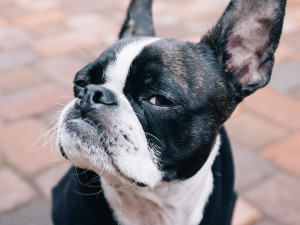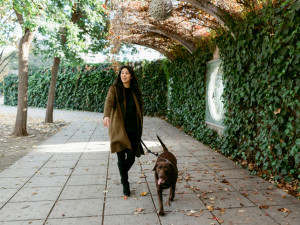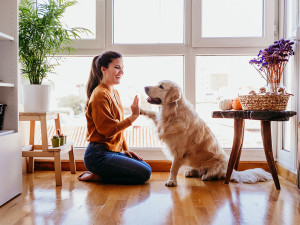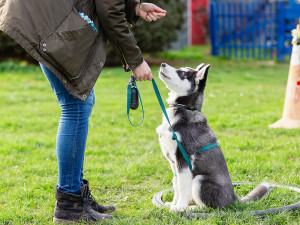Does Your Dog Have a Nose For Scent Training?
This sounds like a competition show waiting to happen.
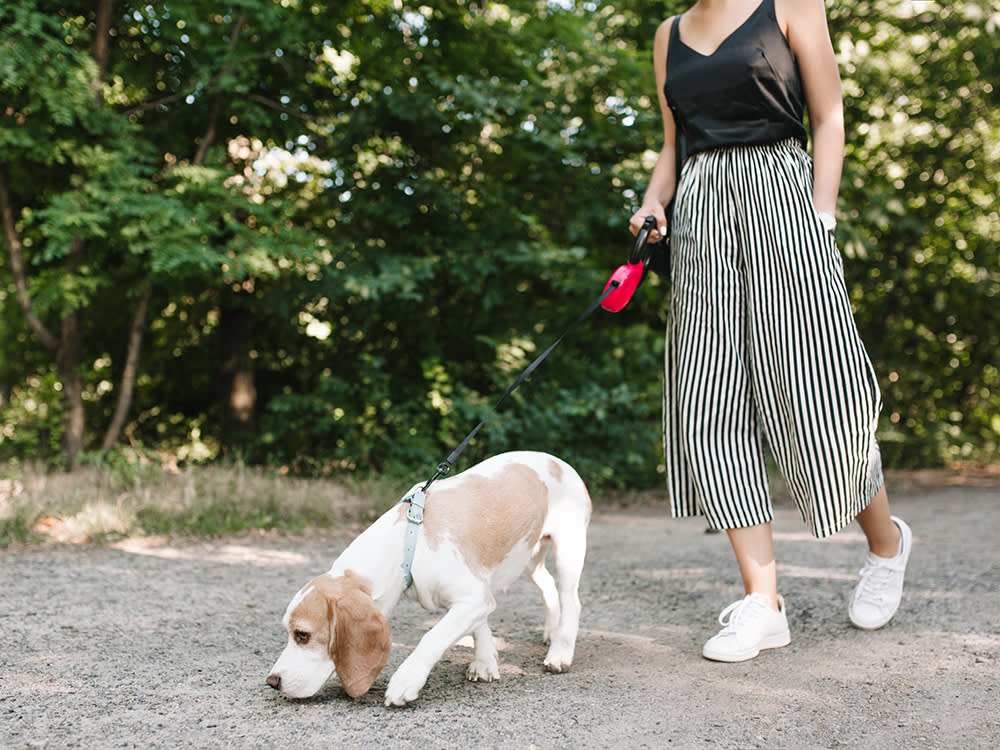
share article

Your pet wants you to read our newsletter. (Then give them a treat.)
Is your dog always walking with their nose to the ground? You could be going out for a quick pee break, and it could be below 30 degrees Fahrenheit with destructive winds, and your dog needs to sniff. This is incredibly annoying, especially if you didn’t bother to grab the heavy-duty coat on your way out the door.
Here’s your solution: Turn this habit of your dog’s into a job (and a reason for you to become an exasperating stage parent). Your pup might be perfect for scent tracking.
The Sport of Scent Tracking
If your dog has a nose, they have the ability to track. Surely you’ve seen them do so on walks, their nose pressed to the ground or lifted high in the air. Tracking tests harness that natural instinct by demonstrating the dog’s ability to follow one particular person’s scent — the tracklayer’s — over various kinds of terrain. Each level of competition features greater challenges such as a longer, well-aged track, more turns, and multiple scent articles.
Unlike agility or obedience training, where the handler gives instructions and the dog is expected to follow, with scent tracking, the dog is in charge. They wear a harness attached to a 30-foot leash and pull the handler down the trail. Some dogs are confident and fly down the track, whereas others are methodical and take their time.
In a tracking test, each dog receives their own track and two judges follow the dog-handler team. Putting on a tracking test is labor-intensive and requires a lot of land, so the dog must be certified prior to entry to ensure that proper training has been met.
What Does a Scent Tracking Test Entail?
Three main organizations sanction tracking tests: the American Kennel Club (AKC), the Australian Shepherd Club of America (ASCA), and Deutscher Verband der Gebrauchshundsportvereine America (DVG America). Of the three, AKC is probably the best known, but allows only purebred dogs. Both the ASCA and DVG America welcome purebred and mixed-breed dogs.
Depending on which venue you choose, you’ll want to find an instructor who can tailor your dog’s training to that organization’s tracking style. For example, AKC doesn’t require a dog to track with precision, meaning their nose doesn’t have to follow the track exactly, as long as they stay within 30 yards of the trail and appear to be working.
On the other hand, DVG America, which offers tracking as part of its Schutzhund working dog program, requires the dog to be right on top of the trail or risk losing points. Whether you decide to track for fun or compete, the key is to be open-minded about your dog’s abilities.
The Three Types of Tracking Tests
The beginner level test, which awards the Tracking Dog (TD) title, requires a dog to follow a 440 to 500 yard-long track with three to five turns that’s been aged 30 minutes to two hours. At the end, they must indicate a scent article to the handler, such as a glove.
The Tracking Dog Excellent (TDX) title, the next level up, requires intermediate tracking skills. At the most advanced level, which earns the Variable Surface Tracking (VST) title, the track is 600 to 800 yards long with four to eight turns, is aged three to five hours, and covers three different ground surfaces, mimicking an urban environment.
To give you an idea of the degree of difficulty of these tests, AKC Field Representative Herb Morrison says the TD has a 55 to 60 percent passing rate, the TDX has a 20 percent passing rate, and the VST has a 5 percent passing rate. The rare dog who passes all three levels earns the title of a Champion Tracker (CT).
Elizabeth Falk and her five-year-old Bull Mastiff, Archie, recently made AKC history when he passed his TD. He became the first of his breed to earn his VCD (Versatile Companion Dog), which requires novice-level titles in agility, obedience, and tracking.
“One of the challenges was me trusting my dog,” recalls Falk, who accidentally flunked Archie at his first tracking test. “He was trying to turn, but I thought the track went straight [and] it was a deer track. Our first trial was definitely a valuable lesson.”
Scent Tracking is Full of Surprises
Carolyn Krause, author of Try Tracking!, began training her Dalmations to track scents after a writer described the breed as “stone-nosed.” Over the past 25 years, her dogs’ multiple tracking titles have clearly proved him wrong.
“If you have ever looked at grass with dew on it and saw all the trails from animals crossing, that gives you an idea what the world of scent shows your dog,” says Krause. “We can see it for just a few minutes. By simply taking your dog to different areas and trying things in [my] book, you can learn a lot about your dog’s personality and temperament. You don’t have to pursue a title, but you do need to make a commitment to it. You have to drive around with a ‘tracking eye’ (’Oh, there’s an interesting place!’) and wonder if your dog could follow that. It’s amazing what your dog will show you.”
Scent Tracking Resources
Books
Following Ghosts: Developing the Tracking Relationship by Suzanne Clothier and John Rice (Flying Dog Press)
Fun Nosework for Dogs (2nd ed.) by Roy Hunter (Howln Moon Press)
Try Tracking! by Carolyn Krause (Dogwise.com)
Organizations

Julia Lane, CPDT-KA
Julia Lane owns Spot On K9 Sports, a training facility in the Chicago area, and offers online dog-sport coaching. She is the author of several travel books, and her byline has appeared in The New York Times Magazine, Poets & Writers and elsewhere.
Related articles
![Woman walking her dog in a park]() opens in a new tab
opens in a new tabDog Walking 101: How Often You Should Walk Your Dog
Your dog may need more exercise than you think, according to two vets and a behaviorist.
![A woman holding a dogs paw and smiling.]() opens in a new tab
opens in a new tabNine Useful Tricks to Teach Your Dog
Go beyond the basics.
![Woman trains with a young husky on a dog training field]() opens in a new tab
opens in a new tabPro Tips: How to Find a Qualified Dog Trainer
The questions to ask and credentials to look out for to find the right trainer for your dog, according to a pro.
